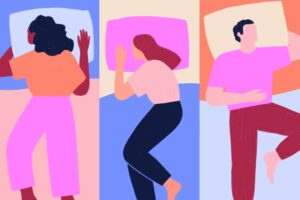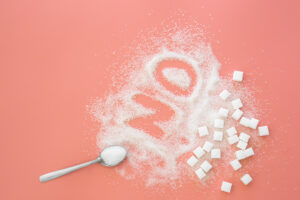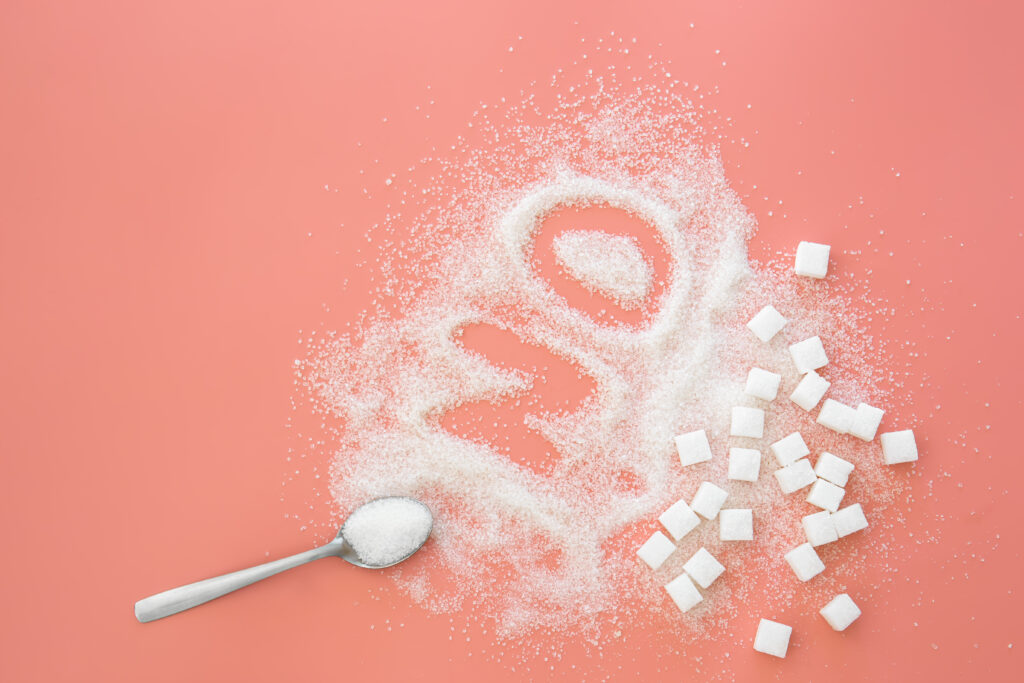You reach for “just one more” sweet treat, despite promising yourself you’d stop. Sound familiar? That’s not just a lack of willpower – your brain is responding to sugar the same way it would to addictive drugs. Recent research reveals something shocking: the neural pathways activated by sugar consumption are virtually identical to those triggered by cocaine.
At SDDM Hospital, we’re seeing more patients struggling with food addiction than ever before. Here’s what every family in Jammu needs to understand about this hidden health crisis.
The Science Behind Sugar Addiction
Your brain can’t tell the difference. MRI scans show that sugar and cocaine activate the exact same reward pathways in your brain. Both substances trigger a massive dopamine release – the “feel good” chemical that keeps you coming back for more.
The numbers are startling:
- Sugar triggers a dopamine release 200% higher than natural rewards like fruits
- Regular consumption reduces dopamine receptors by nearly 35% – making you need more sugar to feel satisfied
- Just 3 weeks of daily sugar consumption creates measurable brain chemistry changes identical to addiction
What makes sugar particularly dangerous is that, unlike cocaine, it’s everywhere – hidden in foods we don’t even consider “sweet.”
Signs You Might Be Addicted to Sugar
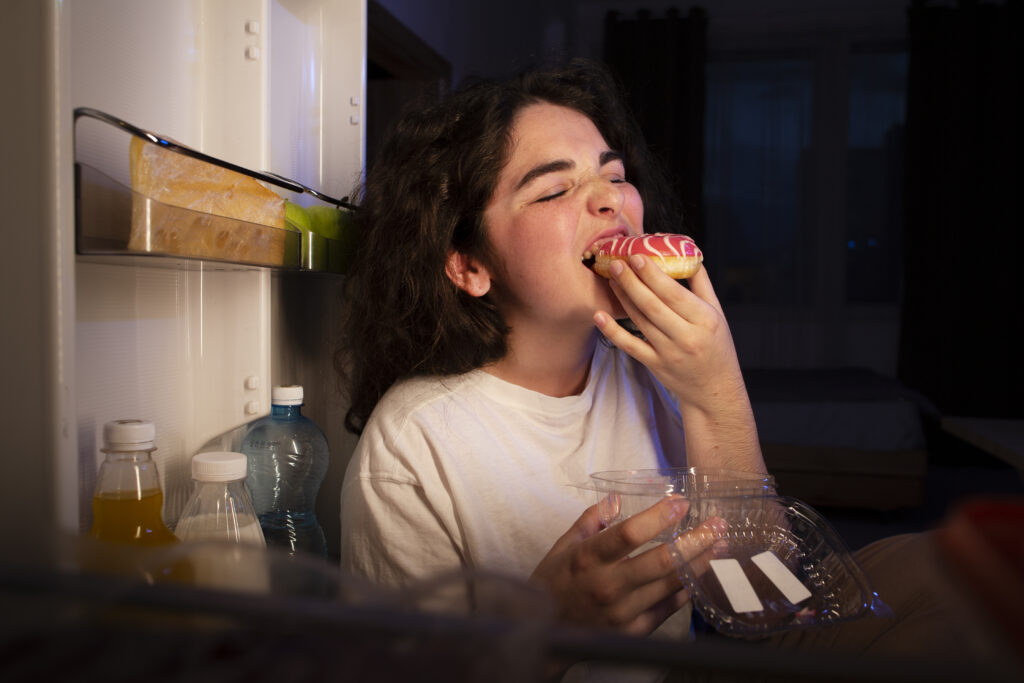
Watch for these warning signals:
- Intense cravings for sweet foods, particularly at specific times of day
- Failed attempts to cut back despite wanting to
- Withdrawal symptoms like irritability, headaches, and mood swings when you try to stop
- Consuming sugar despite negative consequences (weight gain, energy crashes, health issues)
- Needing more sugar over time to feel satisfied
The Foods Engineered to Addict You
Food manufacturers understand addiction science all too well. Many processed foods are carefully engineered with the perfect combination of sugar, salt, and fat – known in the industry as the “bliss point” – designed to override your brain’s natural fullness signals.
The most addictive food combinations:
- Sugar + fat (ice cream, pastries)
- Sugar + salt (salted caramel, kettle corn)
- Sugar + texture (crunchy + sweet cereals)
- Hidden sugars in “healthy” foods (flavored yogurt, granola bars, fruit juices)
One shocking study found that laboratory rats chose sugar water over cocaine 94% of the time when given the choice – even rats already addicted to cocaine!
Hidden Sugars in “Healthy” Foods
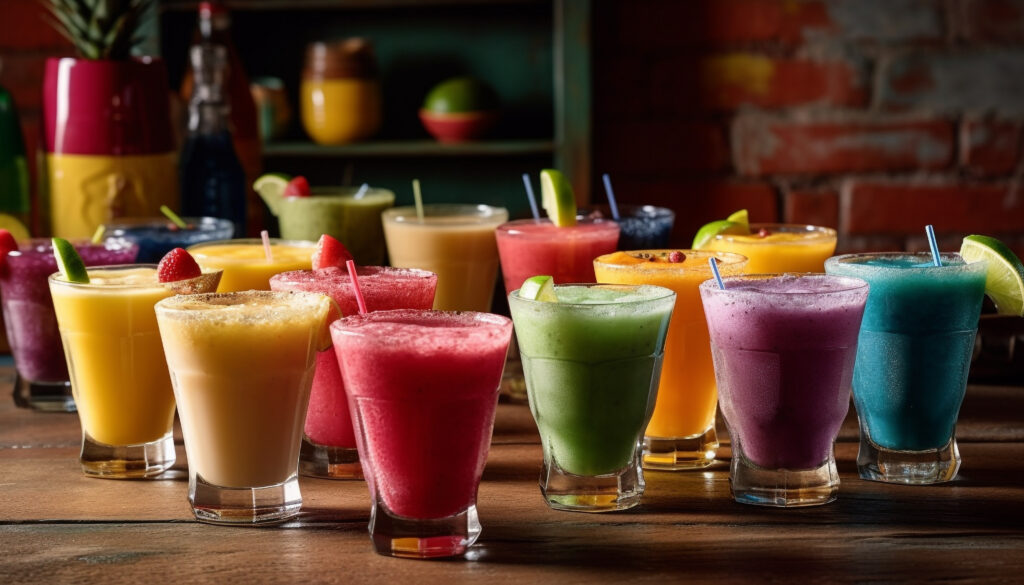
Be vigilant about these surprising sugar sources:
- Flavored yogurt (can contain more sugar than ice cream)
- Granola and energy bars (often 25-30% sugar by weight)
- Fruit juices (even 100% juice lacks fiber to buffer sugar absorption)
- Pasta sauces (some contain more sugar per serving than cookies)
- “Low-fat” products (often compensate with added sugar)
Breaking the Addiction Cycle
The good news? Your brain can heal. Here’s how to reset your reward pathways:
The 21-Day Sugar Reset
- Days 1-3: Most difficult withdrawal period – expect headaches and cravings
- Days 4-7: Physical symptoms ease but psychological cravings remain
- Days 8-14: Taste buds begin to reset – natural foods taste sweeter
- Days 15-21: New neural pathways form – addiction hold weakens
- After 21 days: Dopamine receptors begin to regenerate
Practical Steps for Breaking the Cycle

Step 1: Gradual Reduction (Not Cold Turkey)
- Week 1: Cut processed sugars only (sweets, desserts, sugary drinks)
- Week 2: Reduce hidden sugars (sauces, packaged foods, white bread)
- Week 3: Minimize all high-glycemic foods
- This gradual approach has a 65% higher success rate than attempting to quit all at once
Step 2: Strategic Meal Planning
- Start the day with protein, not carbs (eggs instead of cereal)
- Follow the 1:1:2 ratio – for every serving of carbs, eat 1 serving of protein and 2 of vegetables
- Pre-plan your meals – most sugar binges happen when we’re hungry without healthy options ready
- Eat every 3-4 hours to prevent blood sugar crashes that trigger cravings
Step 3: Smart Sugar Substitutions
- Replace sugary drinks with lemon water or masala chai (without sugar)
- Satisfy sweet cravings with cinnamon, cardamom, or fennel seeds – traditional spices that naturally reduce sugar cravings
- Fresh fruits with yogurt instead of desserts (especially apples, which contain fiber that slows sugar absorption)
- Dark chocolate (70%+ cacao) in small amounts for chocolate cravings
Step 4: Environment Control
- Remove trigger foods from your home entirely
- Rearrange your kitchen – place healthy snacks at eye level
- Pre-portion snacks – never eat directly from packages
- Shop the perimeter of grocery stores (where whole foods are located)
- Never shop hungry – eat a protein-rich snack before grocery trips
Step 5: Emotional Strategies
- Identify your triggers – keep a food-mood journal to spot patterns
- Create a craving emergency kit – healthy snacks, herbal tea, and a list of 5-minute distraction activities
- Implement the 10-minute rule – when a craving hits, wait 10 minutes before deciding whether to indulge
- Practice stress-reduction techniques like deep breathing or a 5-minute walk
- Find sugar-free rewards – create a list of non-food pleasures
Practical Shopping Guide
How to Read Food Labels for Hidden Sugars
- Look beyond “Sugar” – watch for these aliases: sucrose, high-fructose corn syrup, dextrose, maltose, rice syrup
- Check the order – ingredients are listed by quantity (higher amounts come first)
- Calculate teaspoons – divide grams of sugar by 4 to visualize actual teaspoons
- Know the daily limit – women: 6 teaspoons (25g); men: 9 teaspoons (38g)
- Beware “healthy” claims – “natural” and “no added sugar” products often contain fruit concentrates that act exactly like sugar in your body
Smart Swaps for Common Sugar-Loaded Foods
| Instead of This | Choose This | Sugar Reduction |
|---|---|---|
| Flavored yogurt | Plain yogurt with fresh fruit | 75% less sugar |
| Breakfast cereal | Oats with cinnamon and nuts | 80% less sugar |
| Fruit juice | Whole fruit + water | 65% less sugar |
| Granola bars | Handful of nuts and apple | 90% less sugar |
| Pasta sauce | Simple tomatoes + herbs | 100% less sugar |
Local Jammu Foods That Help Fight Sugar Cravings

- Walnut (akhrot) tea – boil 4-5 crushed walnuts for 5 minutes, known to balance blood sugar
- Amla (Indian gooseberry) – helps regulate glucose metabolism and satisfies sweet cravings
- Roasted makhana (fox nuts) – perfect crunchy snack with almost zero sugar
- Sattu drink – traditional gram flour drink that provides sustained energy without sugar spikes
- Cinnamon (dalchini) tea – naturally sweet taste plus blood sugar regulating properties
How SDDM Hospital Can Help
Breaking food addiction isn’t just about willpower – sometimes medical support makes all the difference. Our dedicated teams are ready to help:
- Nutrition Services: Personalized food addiction assessment and recovery plans
- Endocrinology Department: Evaluation of blood sugar regulation and metabolic health
- Mental Health Support: Addressing emotional aspects of food addiction
- Family Medicine: Comprehensive health assessment to address addiction-related conditions
When to Seek Medical Help for Sugar Addiction
Consider consulting with SDDM Hospital’s specialists if you experience:
- Intense withdrawal symptoms when reducing sugar
- Inability to control consumption despite multiple attempts
- Related health issues like diabetes, fatty liver, or high blood pressure
- Emotional eating patterns that feel impossible to break
- Weight management challenges despite other healthy habits
The Bottom Line
Sugar addiction is real and physiological – not a moral failing. Your brain responds to sugar just like it would to addictive substances, but with proper support, you can reset these pathways and regain control of your eating habits.
Need Help Breaking the Cycle?
If you or a family member is struggling with food addiction, don’t face it alone. SDDM Hospital offers comprehensive nutrition and mental health support to help you understand and overcome these powerful cravings.
SDDM Hospital: +91-191-2464637
Comprehensive nutrition and addiction support services
Remember – understanding that sugar addiction is a brain chemistry issue, not just a willpower problem, is the first step toward lasting change.

